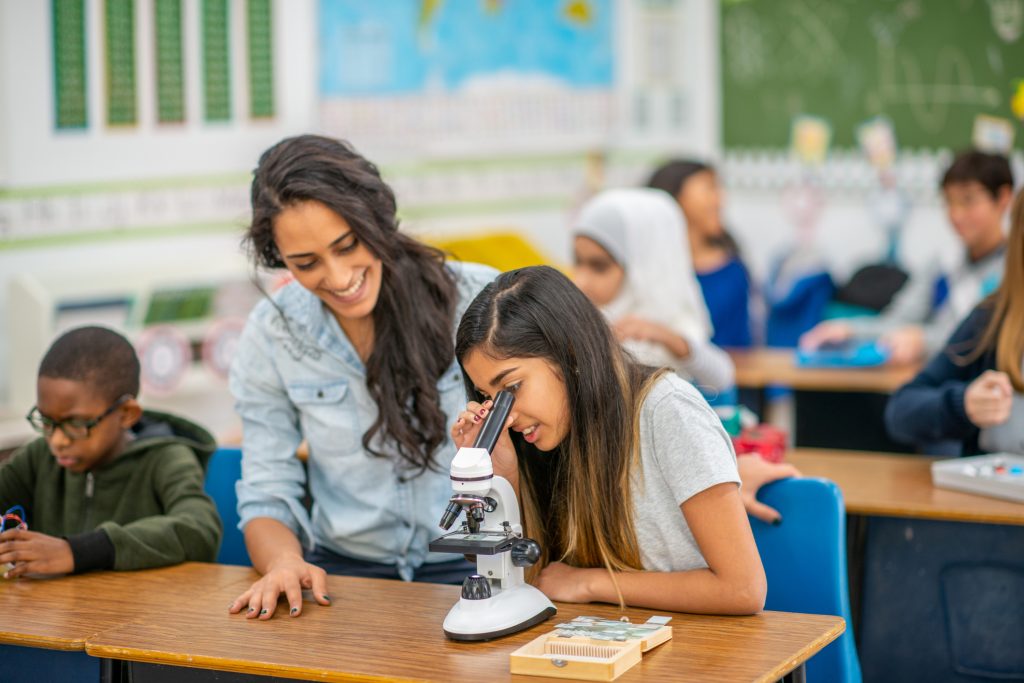EdReports posted an article in January titled: Quality Curriculum Drives Evidence-Based Teacher Practices about findings from their 2023 State of the Instructional Materials Market report, which proves my own hypothesis:
Curriculum matters.
Although I am a High School English teacher at heart, through my teaching of the scientific method to grades 1-6, I recognize the beneficial skills that students learn in a science curriculum. Additionally, the findings of EdReports made me want to focus on science; consider their statement:
“Aligned materials in science boost engagement in a variety of inquiry-based learning tasks, including constructing scientific arguments; using models; and obtaining, evaluating, or communicating information about scientific phenomena. These activities are crucial for developing a comprehensive understanding of scientific methods and encouraging critical thinking. (EdReports, 2023)”
Now, view this statement through the lens of Harvard Business Review listing the top soft skills employers are looking for in candidates:
- Engagement in a variety of inquiry-based learning tasks
- Constructing arguments
- Using models
- Obtaining information independently
- Evaluating information
- Communicating information
- Developing a comprehensive understanding of methods and patterns
- Thinking critically
Also, think about the above list regarding writing and problem-solving. These skills learned in science class readily transfer to other subjects and, more importantly, stay with students throughout adulthood. To best teach these skills, teachers need high-quality instructional materials because “when teachers use quality materials, students have access to activities that are crucial for deepening understanding and fostering participation (EdReports, 2025).”
“Drawing from data in EdReports’ over 1,100 published reviews and the RAND Corporation’s American Instructional Resources Survey (AIRS), the report explores the impact of aligned materials across [multiple disciplines]. The availability of aligned curricula has continued to rise—yet only [6% of science teachers] report using at least one aligned curriculum weekly (EdReports, 2025).”
Astonishing.
However, I should not be that surprised because most of the money and attention is directed toward ELA and math programs to get those test scores up. Without resources, the thought of upgrading, much less aligning, a science curriculum is most likely a listed expenditure that only appears on a whiteboard during the first budget meeting and is later erased. Also, edtech companies follow the money, so there are not very many science curriculum options that are aligned to the robust Next Generation Science Standards (NGSS).
EdReports offers a solution. Begin with a teacher led movement to adopt, or even write, a rigorous, standards aligned science curriculum. Next, during the curriculum’s implementation, the teachers need the support of administrators and community members. Finally, long term professional development must be put in place for teachers to reevaluate, share successes, and learn best practices to maintain the robust science curriculum.
Within each of the oversimplified three step solutions, curriculum is mentioned because curriculum matters. I would also like to note that teachers are valued throughout the entire process as well because teachers matter even more.
Educators on a quest to incorporate high-quality instructional materials that align with NGSS standards into their science curriculum, please reach out directly to me to learn more about a solution. You may find that CCC’s content and licensing solution, RightFind Curriculum, meets both your instructional, copyright, and budgetary needs.
If a school or district is interested in developing a new or adapting an old science curriculum, Copyright Clearance Center offers RightFind Curriculum, a combined content and licensing solution to help schools on their quest to adopt high-quality instructional materials that align with NGSS. The solution enables educators to search for, discover, and incorporate content across disciplines, in curriculum and instruction, knowing this content is also copyright compliant. RightFind Curriculum includes print and digital rights to use 1M+ copyrighted English and Spanish language works (books, magazines, newspapers, and online content) from 90+ leading publishers, including National Geographic, Science News, Popular Science, Oyla, Oakland Zoo, Natural History, Brainspace, and university presses. Please reach out directly to me to learn more about RightFind Curriculum.
EdReports. (2025). Quality Curriculum Drives Evidence-Based Teacher Practices. January 13, 2025, from https://www.edreports.org/resources/article/quality-curriculum-drives-evidence-based-teacher-practices?utm_medium=email&utm_source=pardot&utm_campaign=som-spinoff-2
EdReports. (2023). State of the Instructional Materials Market: Use of Aligned Materials in 2022. Accessed January 31, 2025, from https://www.edreports.org/reports/state-of-the-market-use-of-aligned-materials-in-2022/

